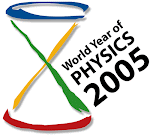
Abstract:
About a century ago, cosmic rays were identified as being a source of radiation on Earth. The proof came from two independent experiments. The Italian physicist Domenico Pacini observed the radiation strength to decrease when going from the ground to a few meters underwater (both in a lake and in a sea). At about the same time, in a balloon flight, the Austrian Victor Hess found the ionization rate to increase with height. The present article attempts to give an unbiased historical account of the discovery of cosmic rays – and in doing so it will duly account for Pacini’s pioneering work, which involved a technique that was complementary to, and independent from, Hess’. Personal stories, and the pre- and post-war historical context, led Pacini’s work to slip into oblivion.
"Domenico Pacini, the forgotten pioneer of the discovery of cosmic rays" by A. D. Angelis, N. Giglietto, and S. Stramaglia





























!["Coupling" 1976 [Gum-bichromate]](http://2.bp.blogspot.com/_IoU3bEFUwWc/S69lnr9G6AI/AAAAAAAAH58/O40Gg-G6rKk/S150/COUPLING+3.jpg)







2 comments:
Pacini and Hess used two complementary approaches - both were geniuses.
Pacini and Hess used two complementary approaches - both were geniuses.
Post a Comment